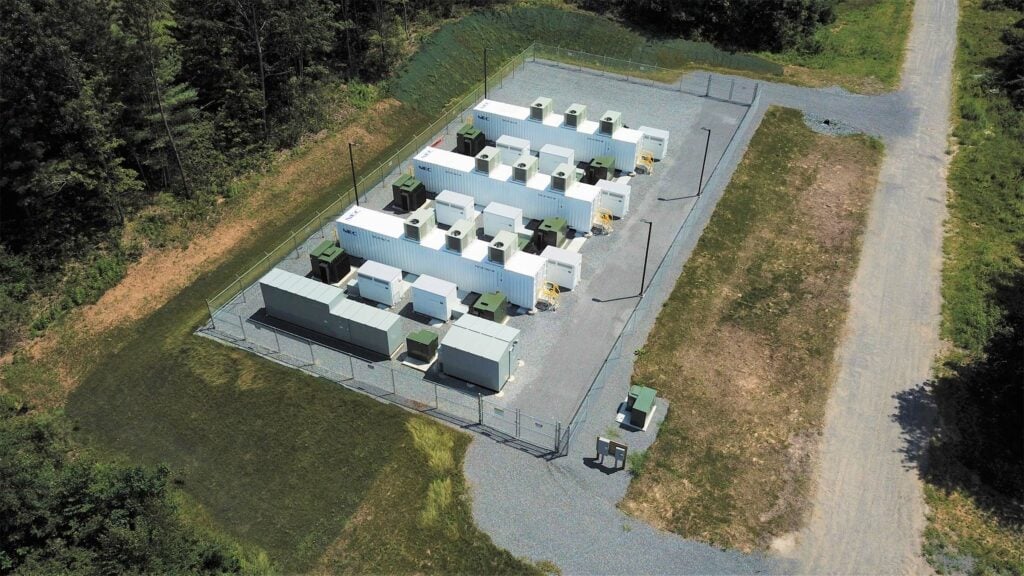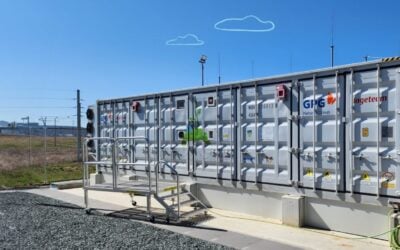
A 150MW / 600MWh battery storage system would be a central component of a proposed “state-of-the-art clean energy underground highway,” capable of transmitting renewable energy into New York City from Upstate New York, Energy-Storage.news has heard.
New York’s electric transmission system needs to be able to support the ongoing and rapid growth of renewable energy. The state’s Climate Leadership and Community Protection Act legislation requires that 70% of electricity must come from renewables sources by 2030. While the more rural Upstate areas of New York are ideal for siting wind and solar, the majority of demand for energy is in the densely packed urban areas of New York City.
Enjoy 12 months of exclusive analysis
- Regular insight and analysis of the industry’s biggest developments
- In-depth interviews with the industry’s leading figures
- Annual digital subscription to the PV Tech Power journal
- Discounts on Solar Media’s portfolio of events, in-person and virtual
With the state committing more than US$340 million towards upgrading its transmission networks, Avangrid, a subsidiary of major European utility company Iberdrola, has put forward its proposed Excelsior Connect project, which would pair an underground high voltage DC transmission line with renewable energy resources and the battery energy storage system (BESS).
If selected by the New York State Energy Research and Development Authority (NYSERDA) through an ongoing request for proposal (RFP), it could begin construction in 2024 and go into operation in 2026.
Avangrid has formed a partnership with BESS developer Key Capture Energy, which is already behind two of New York’s first large-scale battery projects and is currently building another this year. Key Capture Energy’s CEO Jeff Bishop and director of development in New York, Taylor Quarles, told Energy-Storage.news in an interview that the project would help bring renewables into NYC at scale, overcoming the limitations of an existing electricity grid that was largely built nearly a century ago.
“The Excelsior Connect project is a combination of a couple of thousand megawatts of upstate new renewable energy — so wind and solar — a 108 mile underground HVDC line that Avangrid is going to be building and then Key Capture’s 150MW battery that will sit at the northern end of that line and just help ensure that the wind and solar can be delivered downstate when it’s needed,” Quarles said.
“The end goal being that the currently 70% of downstate energy that’s served from carbon emitting resources can instead pull that upstate renewable energy during peak and use that instead.”
‘Maximising value for New York ratepayers’
Avangrid has two business divisions, one focusing on network buildout and the other on renewables. This makes the company experienced in both areas required for the project, Quarles said, adding that the fact that the transmission lines would be underground makes it far less likely it will face opposition than the more traditional overhead lines.
CEO Jeff Bishop said that Key Capture Energy suggested to its partner that 150MW would be the optimal sizing of the battery to help support up to 1,310MW of capacity along the HVDC line’s power flows, taking into account the expected generation profiles of the solar and wind resources.
“We proposed the size based upon simple economics. We have an 87:60 [ratio] of expected wind, of expected solar that’s all connecting to that line. You know the times that there will likely be too much solar, coming on, or too much wind. So we can optimise the capacity of the battery, based upon what made the most sense in order to be able to deliver 24/7 power into New York City that they need. That’s really how the ultimate size of the 150MW came about, we’re doing a four-hour battery on it. We ran all the numbers: should it be a one-hour battery? Should it be an eight-hour battery? Or what combination in between? And 150MW / 600MWh was the one that provided the most value for New York ratepayers,” Bishop said.
What also makes the project important for New York is that historically, a lot of fossil fuel power plants were built in economically or societally disadvantaged communities, communities that Bishop said did not get the chance to benefit from clean energy and were adversely impacted by the polluting energy resources that served the city.
Not only can clean energy projects of this type further economic development in New York, creating jobs, but they can also ensure that there is “spending in economically disadvantaged communities and working all up and down the supply chain, to make sure women, minority-owned and veteran-owned businesses are well represented,” Bishop said, adding that Avangrid made it clear this would be a priority with Excelsior Connect.
“That aligns with our culture,” the Key Capture Energy CEO said.
Excelsior Connect could help integrate renewables and support New York’s goal of going to 100% clean energy by 2040, it could also give renewables developers and investors some assurance that their assets will be utilised and not face curtailment in years to come, the pair said. Adding battery storage can also help reduce the cost of transmission.
“[With] a new high voltage direct current transmission line, the way to lower the overall cost per unit is just to fill it up. So whenever you go from 50% availability up to 100% availability, obviously, the cost per unit over its lifetime, is [cut] in half, roughly. So being able to move more clean electrons on it will add to the most value for New York City ratepayers here,” Bishop said.
Meanwhile Taylor Quarles said that the energy storage system’s main priority will be to deliver zero carbon energy downstate, during peak times when it is most needed, but the batteries will be able to do other ancillary services that can help strengthen the grid.
Avangrid announced the merchant transmission line project in February before submitting its proposal to compete in the NYSERDA Tier 4 solicitation in May. Avangrid VP of business development Sebastian Libonatti told Energy-Storage.news that NYSERDA previously announced an award timeline which would target the third quarter of this year.
When asked if similar projects leaning on energy storage to optimise new transmission line assets could follow, Libonatti said the network builder “will evaluate potential future opportunities, which may include the use of battery storage technology,” as Avangrid works to help support New York’s clean energy goals.
Energy-Storage.news discussed Excelsior Connect with Key Capture Energy’s Jeff Bishop and Taylor Quarles in a wide-ranging interview on the company’s activities and how they view energy storage markets in New York and around the US. The full interview will be published soon.






